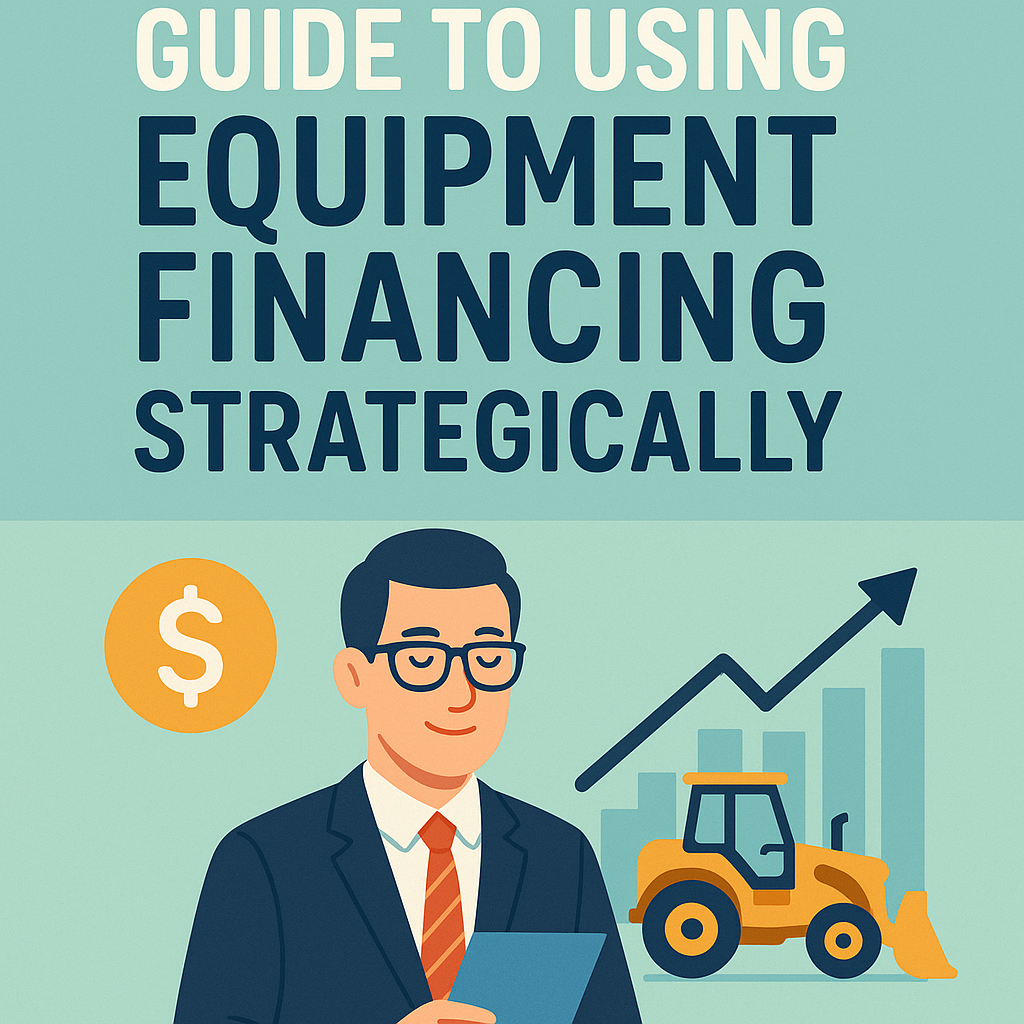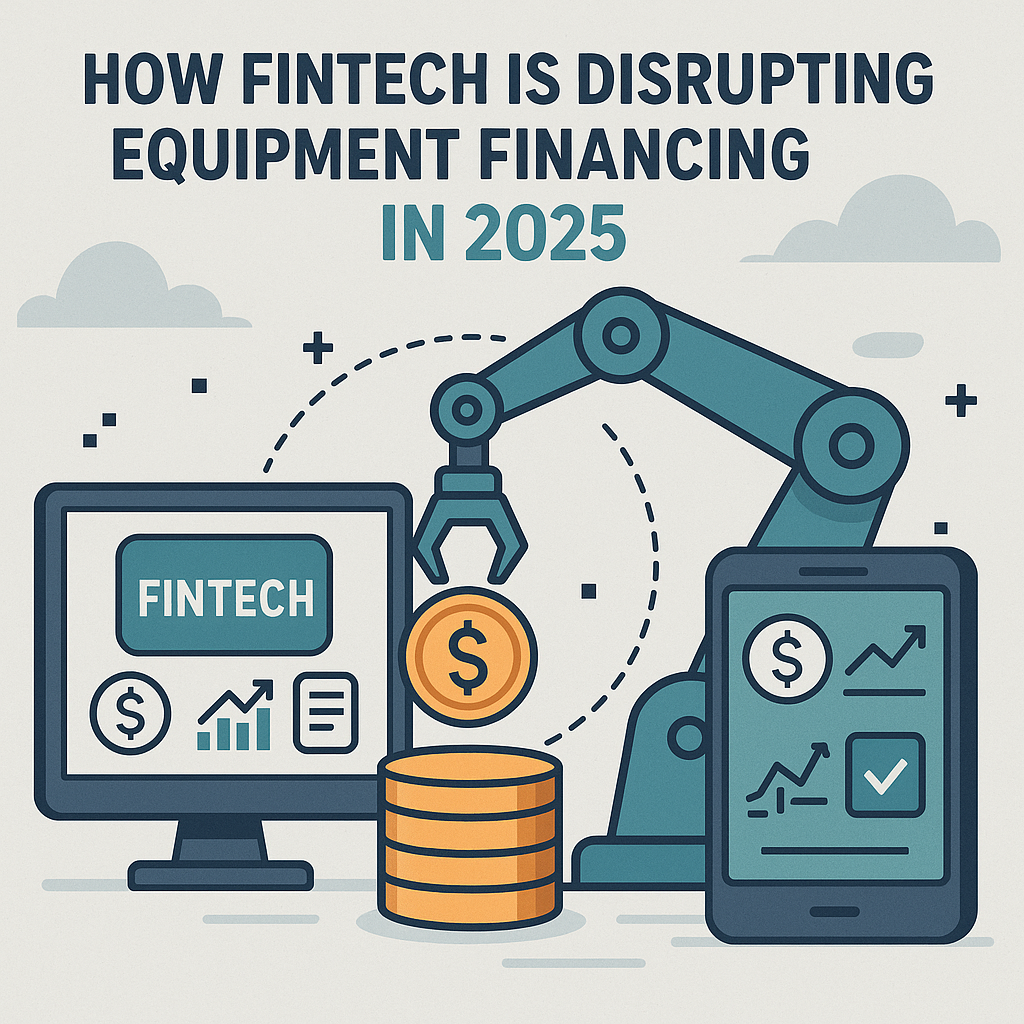How to Choose the Right Equipment Financing Partner in 2024

Whether you run a construction company, manufacturing plant, or a small startup, you may need equipment financing to manage the high upfront costs. However, choosing the right financing partner can make all the difference between a successful investment and a financial headache. With many new financing options emerging in 2024, it’s important to evaluate partners based on their offerings, reputation, and the flexibility they provide.
This comprehensive guide will walk you through the essential steps to choose the right equipment financing partner in 2024.
Why Choosing the Right Equipment Financing Partner Matters
When you finance equipment, you’re committing to a relationship that can last several years. Therefore, selecting the right partner impacts:
- Business Growth: The right financing allows you to acquire the tools you need to scale.
- Cash Flow: Favorable terms ensure that your repayments don’t cripple your finances.
- Future Flexibility: A good partner offers options that allow for equipment upgrades or changes as your business evolves.
Key Factors to Consider When Choosing an Equipment Financing Partner
1. Industry Experience
Not all financing partners understand the specific needs of every industry. Choosing a partner who has a track record in your sector ensures they understand the unique equipment you need and the market’s seasonal fluctuations.
Key questions to ask:
- How long have they been financing equipment in your industry?
- Do they have success stories or testimonials from businesses like yours?
2. Financing Options and Flexibility
A financing partner should offer a variety of payment structures to suit different business models. Whether you need a loan, lease, or equipment line of credit, the right partner will have flexible options that meet your needs.
Common financing options:
- Leasing: Ideal for businesses that frequently upgrade equipment.
- Loans: Suitable for long-term use of equipment, with full ownership at the end.
- Equipment Line of Credit: A flexible option to finance multiple equipment needs over time.
3. Interest Rates and Terms
Interest rates play a major role in the overall cost of your equipment. Compare different financing partners to find the best rate, but also examine the length of terms and any associated fees.
Considerations:
- Are the interest rates fixed or variable?
- Are there any prepayment penalties or hidden fees?
- Does the term length align with your financial forecast?
4. Speed of Approval and Disbursement
In many industries, especially those with high competition, the speed at which you can secure equipment can directly affect your profitability. A financing partner that offers fast approvals and disbursement is key.
Evaluate their speed:
- How quickly can they approve your financing?
- What is the average disbursement time after approval?
5. Customer Service and Support
Look for financing partners who offer clear communication, transparent processes, and dedicated support throughout the loan or lease term.
Important factors to check:
- Do they provide multiple support channels (phone, email, live chat)?
- Are they transparent about fees and terms?
- Is there a dedicated account manager to assist you?
6. Down Payment Requirements
Some financing partners require a down payment, while others offer no-money-down options. Depending on your cash flow, it’s important to know what upfront payment is expected and how it will impact your business in the short term.
Ask about:
- How much down payment is required, if any?
- Can the down payment be negotiated or spread out?
7. End-of-Term Options
Knowing your options at the end of a lease or loan term is important, particularly if your industry experiences rapid technological advancements. Some partners allow you to purchase the equipment, upgrade to newer models, or return the equipment with no further obligation.
End-of-term options to explore:
- Can you buy the equipment at a pre-agreed price?
- Can you renew the lease, return the equipment, or upgrade to a newer version?
- Are there additional fees for extending the lease?
8. Reputation and Credibility
A financing partner’s reputation says a lot about their reliability and trustworthiness. Look for well-established partners with positive customer reviews and solid industry credentials.
Research tools:
- Customer reviews: Check Google Reviews, Trustpilot, or Better Business Bureau (BBB).
- Accreditations: Look for memberships in reputable organizations like the Equipment Leasing and Finance Association (ELFA).
9. Technology and Online Tools
In 2024, the best financing partners offer easy-to-use digital platforms for managing your loan or lease. Online portals allow for quick access to payment schedules, remaining balances, and support services.
Check for:
- Do they offer online application processing?
- Is there an online dashboard to track payments and terms?
- Can you manage your account and payments digitally?
10. Flexibility in Payment Plans
Every business has its cash flow cycles. A good financing partner will offer flexible payment plans, such as deferred payments, seasonal payment structures, or balloon payments.
Flexible options include:
- Deferred payments: Start repayments after a set period.
- Seasonal payments: Align payments with high-revenue months.
- Balloon payments: Lower monthly payments with a large final payment.
Steps to Finding the Right Equipment Financing Partner
1. Assess Your Equipment Needs
Before approaching any financing partner, know exactly what equipment you need and how it will impact your business operations. This will allow you to communicate clearly with potential lenders about your requirements.
2. Research Potential Partners
Don’t rush into a partnership with the first financing company you find. Research multiple companies, compare rates and terms, and read reviews from other businesses in your industry.
3. Compare Loan Structures and Terms
Each financing partner offers different structures. Ensure that the payment terms, interest rates, and repayment schedules align with your business model and cash flow.
4. Ask for References
Request case studies or references from other businesses that have worked with the financing partner. This helps you verify their credibility and service quality.
5. Read the Fine Print
Before signing any agreement, carefully review the contract. Hidden fees, vague clauses, or restrictive terms can create long-term challenges. If there’s anything you don’t understand, get clarification.
FAQs on Choosing the Right Equipment Financing Partner
1. What is the difference between leasing and financing equipment?
Leasing allows you to use the equipment for a set period without owning it. You make monthly payments and, at the end of the term, may have the option to renew the lease, upgrade the equipment, or return it. Financing (loans) involves borrowing money to purchase the equipment outright, with payments made over time until you own the equipment.
2. How do interest rates affect equipment financing?
Interest rates determine how much extra you’ll pay on top of the equipment’s base cost. Lower interest rates save you money in the long run, while higher rates increase the overall cost of financing. It’s crucial to compare rates and select a partner with competitive pricing.
3. How much down payment is typically required for equipment financing?
Down payments can vary greatly depending on the lender and type of financing. Some partners require a down payment of 10-20%, while others offer zero-down financing, depending on your creditworthiness and the equipment’s cost.
4. How can I ensure my financing partner has a good reputation?
To check a financing partner’s reputation, read customer reviews on platforms like Trustpilot or the Better Business Bureau (BBB). Additionally, seek out testimonials and case studies from businesses in your industry to verify their reliability.
5. What happens at the end of an equipment lease?
At the end of a lease, you may have several options: purchase the equipment at a pre-agreed price, renew the lease, upgrade to newer equipment, or return the equipment without further obligation. Be sure to understand your end-of-term options before signing a lease.
6. What should I look for in a financing partner’s customer service?
Look for responsive customer service that provides multiple communication channels, such as phone, email, and online chat. A dedicated account manager and clear, transparent communication are key to ensuring a smooth financing experience.
Conclusion
Choosing the right equipment financing partner in 2024 is crucial for your business’s financial health and operational success. By evaluating factors like industry experience, financing options, interest rates, and customer service, you can ensure you select a partner that aligns with your goals and helps propel your business forward.





No comment